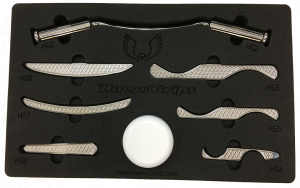 If you have ever had physical therapy, or know of someone who has had it, you probably have a basic idea about what happens in a typical PT appointment. Massage, or more accurately manual therapy, is a large part of most recovery processes. Many people even mistake physical therapy for massage therapy. The purpose for massage is soft tissue mobilization. Soft tissue basically means any tissue of the body that isn’t bone. Physical therapists work mostly with muscles, ligaments, tendons and fascia. Ligaments join bones together, tendons join muscles to bones, and fasciae surround muscles, bones, organs and other structures in the body.
If you have ever had physical therapy, or know of someone who has had it, you probably have a basic idea about what happens in a typical PT appointment. Massage, or more accurately manual therapy, is a large part of most recovery processes. Many people even mistake physical therapy for massage therapy. The purpose for massage is soft tissue mobilization. Soft tissue basically means any tissue of the body that isn’t bone. Physical therapists work mostly with muscles, ligaments, tendons and fascia. Ligaments join bones together, tendons join muscles to bones, and fasciae surround muscles, bones, organs and other structures in the body.
Trauma to any of the above soft tissues will usually result in scarring of some kind. Scars are made up of collagen, the same material that ligaments, tendons and fascia are made of. Scarring creates adhesions, where tissue fibers adhere together, reducing it’s ability to stretch, which reduces it’s mobility. Soft tissue mobilization breaks these adhesions, which releases the tissues and increases range of motion and reduces pain.
Therapists employ many methods to mobilize soft tissue. Most commonly, they use a hands-on approach. However, another method used by many therapists (including Jake in our clinic) is instrument assisted soft tissue mobilization, or IASTM. IASTM has been used for centuries, and with the help of modern science, has been perfected for use in physical therapy. The instruments used are specially crafted so that they can be used on any part of the body with maximum results.
But what’s the difference between traditional soft tissue mobilization and IASTM? Clinical studies show that the IASTM can dramatically decrease healing time, and can increase range of motion and decrease pain in a much shorter time than traditional manual therapy.
Our therapist Jake, has taken courses on the use of these instruments and is a certified IASTM clinician. If you’re interested in receiving this kind of treatment during your recovery just ask anyone in our clinic, or you can contact us for more information here.

Recent Comments